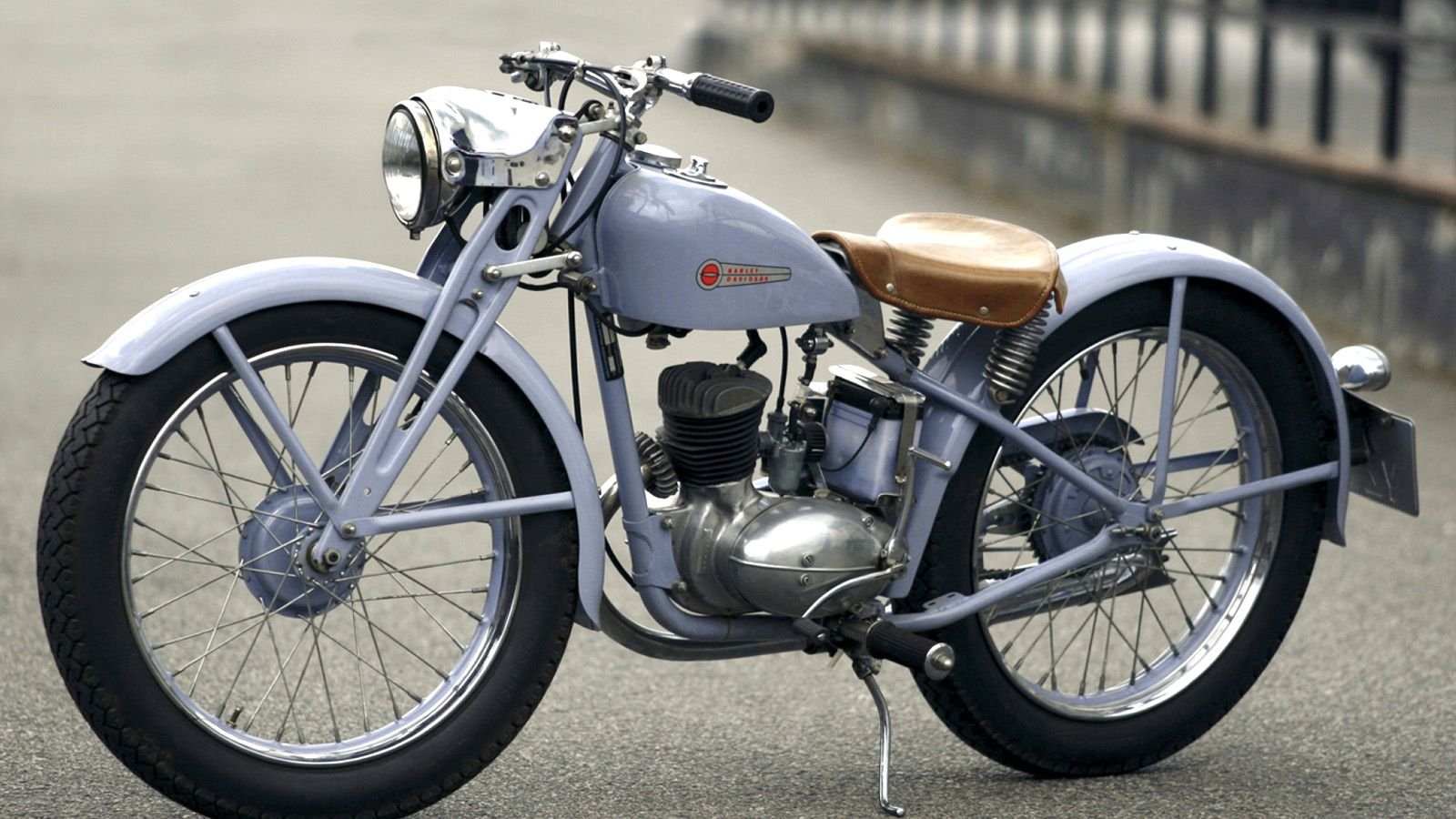Leisure Products: Two Decade of 'Little' Harley-Davidsons
Want a good time without spending a bunch of cash? Get your mind out of the gutter and get one of these classics.
















Repeat History
Harley-Davidson's recent announcement of a future range of 'leisure products' should come as no surprise — the Motor Company has been down that road before. From 1948 to 1966 Harley-Davidson built a series of small displacement motorcycles, all commonly referred to as 'Hummers.' With climbing gas prices, these little machines might again look enticing. Here is an overview in case you want to shop for a budget-minded retro-rides.
Model S-125
Based on the DKW RT-125, the Model S-125 was built from blueprints awarded to Harley-Davidson as part of German war reparations. Once dubbed the 'Little Marvel,' the adept two-stroke was an affordable, low-maintenance model that attracted entry-level riders. Introduced in 1947, the 125cc single-cylinder two-stroke sold in the thousands. Popular with young and new riders, the Model S-125 was produced until 1952.
>>Join the conversation about these Hummer bikes right here in HD Forum!
Model 165
Introduced with a dreamy promotional film, the Model 165 replaced the S-125 in 1953. Sold until 1959, the Model 165 was advertised as having a “jewel of an engine” with “one-hundred and sixty-five cubic centimeters of smooth go-power!” Not unlike today, the intent behind the lightweights was to entice buyers to eventually move up to the full-size models.
>>Join the conversation about these Hummer bikes right here in HD Forum!
Hummer
Introduced in 1955, the Hummer was a stripped-down version of the Model 125. Sold without a battery, it relied on a magneto ignition for starting. Harley-Davidson named the model after Dean Hummer, an Omaha, Nebraska dealer who led the national sales for two-stroke motorcycles. Produced until 1959, the name 'Hummer' now references all single-cylinder Harley-Davidson motorcycles made from 1948 to 1966.
>>Join the conversation about these Hummer bikes right here in HD Forum!
Super 10
Only produced from 1960 to 1961, the Super 10 was a replacement for both the Model 165 and the Hummer. The Super 10 had identical visual characteristics to predecessors, such as the sheet metal fork cover and full fenders. Mechanically, it used the same magneto ignition for power but, unlike the Hummer, the Super 10 included a taillight and horn.
>>Join the conversation about these Hummer bikes right here in HD Forum!
Pacer
In 1962, the 175cc Pacer replaced the Super 10. The 1962 and 1963 Pacer models were almost identical to the Super 10, except for a bigger motor. In 1964, the Pacer's frame was redesigned to accept rear suspension. An 'L-shaped' swingarm incorporated a horizontally-mounted spring under the engine. The main frame supported the engine, seat and fender stays. Despite the innovative design, the Pacer went out of production in 1965.
>>Join the conversation about these Hummer bikes right here in HD Forum!
Ranger / Scat
During the Pacer production years, Harley-Davidson also built off-road versions of the Model 165 and the Pacer. The one-year-only 1962 Ranger came with no lights but featured extra-low gearing and the 165cc motor. The dual-purpose Scat (pictured above) was built from 1962 to 1965. It offered a high-mounted front fender, 'scrambler-style' high-mounted exhaust, and street-legal off-road tires. The Scat also used the Pacer's new rear suspension frame.
>>Join the conversation about these Hummer bikes right here in HD Forum!
Bobcat
The 125cc Bobcat was only offered in 1966 and used a version of the Pacer's sprung frame. Although quirky, the Bobcat's one-piece fiberglass bodywork was quite a forward-thinking design. The Bobcat was the end of the line for the 'Hummers,' as Harley-Davidson had already purchased Aermacchi in 1960. The Sprint and other small-displacement motorcycles took over until 1978 when Harley-Davidson abandoned the lightweight market entirely.
>>Join the conversation about these Hummer bikes right here in HD Forum!
For help with routine maintenance and repairs, visit the HD Forums How-To section.

